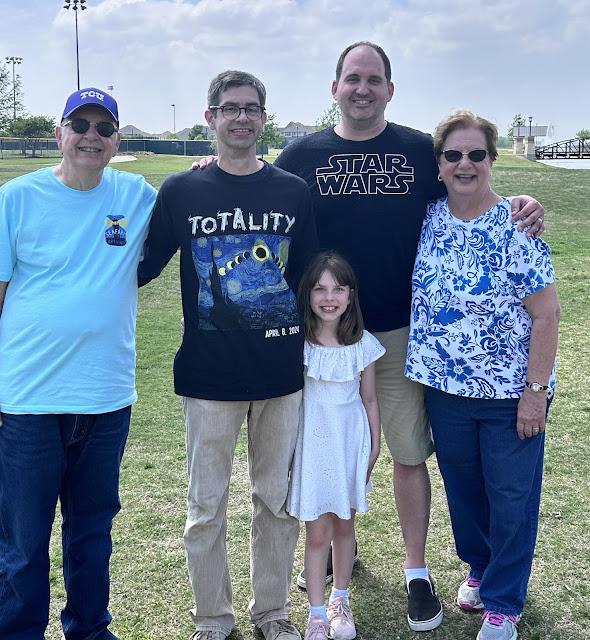Solar Eclipse Eye Safety
We are a bit over 2 months away from the eclipse, so I thought that this was as good a time as any to review eye safety details with you.
Here is the most important thing to remember from this post: anytime the sun is not covered at all, or partially covered (even including 99%!) you MUST use proper methods AND proper materials to PROTECT your eyes. However, if you are in this path of totality:
then DURING THE TOTAL PHASE ONLY, WHEN THE SUN IS COMPLETELY BLOCKED, it is COMPLETELY SAFE to look at the sun directly without any protection. If you try to use eye safety protection during totality, you'll miss the best part!
When the sun returns, you MUST go back to the proper eye safety methods and materials.
So, how do you keep your eyes safe before and after the eclipse, as well as during the partial eclipse (or partial phases before and after totality)?
Well, I'll just let the American Astronomical Society tell you:
Notes:
Safe solar eclipse glasses and viewers must comply with the ISO 12312-2 international standard.
Reputable suppliers of safe (non-magnified) solar viewers:
Based upon comments that I see on social media, I feel I must emphasize this part, from the website:
"Important: We do not recommend searching for eclipse glasses on Amazon, eBay, Temu, or any other online marketplace and buying from whichever vendor offers the lowest price. Before you buy a solar viewer or filter online, we recommend that you make sure that (1) the seller is identified on the site and (2) the seller is listed on this page."
If you are intending to watch with magnification, see also:
- You are also encouraged to email me at eclipse482024@gmail.com for additional tips, or comment below.
Also note the section on projecting the sun's image. There are multiple ways to do that- just make sure to follow the recommended procedures. Seeing eclipse crescents projected by the trees is a great way to experience the partial phase not long before totality!
Have a great (but safe) view.

Comments
Post a Comment